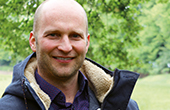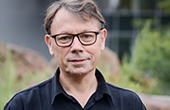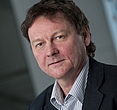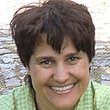Recent research highlights that diversity at higher trophic levels (above- and belowground) can simultaneously influence multiple ecosystem functions (multifunctionality) [1] [2] [3].These higher trophic levels, however, are often strongly negatively affected by anthropogenic pressures, such as land-use intensification[4] [5]. The ecological consequences of non-random, trait-based biodiversity changes in complex food webs have rarely been studied so far[6]. The iDiv Ecotron was explicitly designed to address the perpetual claim that biodiversity–ecosystem function (BEF) research in terrestrial ecosystems needs to move beyond the manipulation of diversity at single trophic levels to embrace the multitrophic complexity of ecological communities[7] [8] [9].
Research possibilities within the iDiv Ecotron experimental units (EcoUnits):
- Manipulation of abiotic conditions including light intensity, irrigation, nutrient supply, or toxins
- Investigation of the interaction of primary producers, decomposers, herbivores, predators, mutualists, parasites, and pathogens under various abiotic conditions
- Manipulation of diversity within and across trophic levels and functional groups in combination with different global change scenarios
References
[1] Lefcheck, J. S., Byrnes, J. E. K., Isbell, F., et al. and Duffy, J. E. (2015) Biodiversity enhances ecosystem multifunctionality across trophic levels and habitats. Nature Communications, 6, 6936.
[2] Soliveres, S., van der Plas, F., Manning, P., et al. and Allan, E. (2016) Biodiversity at multiple trophic levels is needed for ecosystem multifunctionality. Nature, 536, 456-459. 10.1038/nature19092.
[3] Schuldt, A., Assmann, T., Brezzi, M., et al. and Bruelheide, H. (2018) Biodiversity across trophic levels drives multifunctionality in highly diverse forests. Nature Communications, 9, 2989. 10.1038/s41467-018-05421-z.
[4] Allan, E., Bossdorf, O., Dormann, C. F., et al. and Fischer, M. (2014) Interannual variation in land-use intensity enhances grassland multidiversity. Proceedings of the National Academy of Sciences, 111, 308-313. 10.1073/pnas.1312213111.
[5] Attwood, S. J., Maron, M., House, A. P. N. and Zammit, C. (2008) Do arthropod assemblages display globally consistent responses to intensified agricultural land use and management? Global Ecology and Biogeography, 17, 585-599. doi:10.1111/j.1466-8238.2008.00399.x.
[6] Eisenhauer, N. (2017) Consumers control carbon. Nature Ecology & Evolution, 1, 1596-1597. 10.1038/s41559-017-0352-y.
[7] Naeem, S., Thompson, L. J., Lawler, S. P., Lawton, J. H. and Woodfin, R. M. (1994) Declining biodiversity can alter the performance of ecosystems. Nature, 368, 734-737.
[8] Cardinale, B. J., Duffy, J. E., Gonzalez, A., et al. and Naeem, S. (2012) Biodiversity loss and its impact on humanity. Nature, 486, 59. 10.1038/nature11148
[9] Hines, J., van der Putten, W. H., De Deyn, G. B., et al. and Eisenhauer, N. (2015) Chapter Four - Towards an Integration of Biodiversity–Ecosystem Functioning and Food Web Theory to Evaluate Relationships between Multiple Ecosystem Services. In Woodward, G. and Bohan, D. A. (eds), Advances in ecological research, Academic Press. pp. 161-199.







